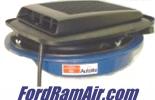> When should you use one and when should you not. I see a bunch of
> handling kits that as you go up in performance they do not use a
> rear sway bar. I thought a rear sway bar was better? What you are seeking is a balance of roll stiffness front-to-rear.
The rear bar should trim the rear roll stiffness to make the car
neutral in most turns. A bit of understeer is usually desirable
at the limit (for safety), particularly with lots of power, but
some autocrossers like the car to oversteer at the limit. A neutral
car will have the front and rear tires losing traction at the same
time when the car is in a steady turn.
Lots of things factor into the equation: front and rear spring rates,
front sway bar size, static camber and camber gain, tire size,
weight distribution, etc. Chassis stiffness is also very important.
If the structure isn't stiff enough, a large sway bar will cause the
body or pick up points to twist or deflect under the load. If you've
not already done it, the first thing to do is install weld-in subframe
connectors, a Monte Carlo bar, and one piece export brace.
With my current set-up, my '66 fastback has a 1" sway bar and no
rear bar and is very neutral, even with the 351C. This is because
of my spring rates and most importantly the Global West control arms
which radically change the camber gain. With stock front control
arms, the car would understeer and a rear bar would help. Eventually,
I plan on installing a torque arm (with Watts or Panhard) and coil
over rear springs. Torque arms require more rear stiffness, so I
may need to add a rear bar at the same time.
Global West has a chart in their catalog (might be in their website)
of what size sway bars they recommend for the various years and engine
options for both early and late model Mustangs. It might help to
get a look at it.
Dan Jones











 Mustangsandmore Forums
Mustangsandmore Forums

 '64 1/2 to '73 -- The Classic Mustang
'64 1/2 to '73 -- The Classic Mustang

 To Rear Sway Bar or Not To....
To Rear Sway Bar or Not To....


